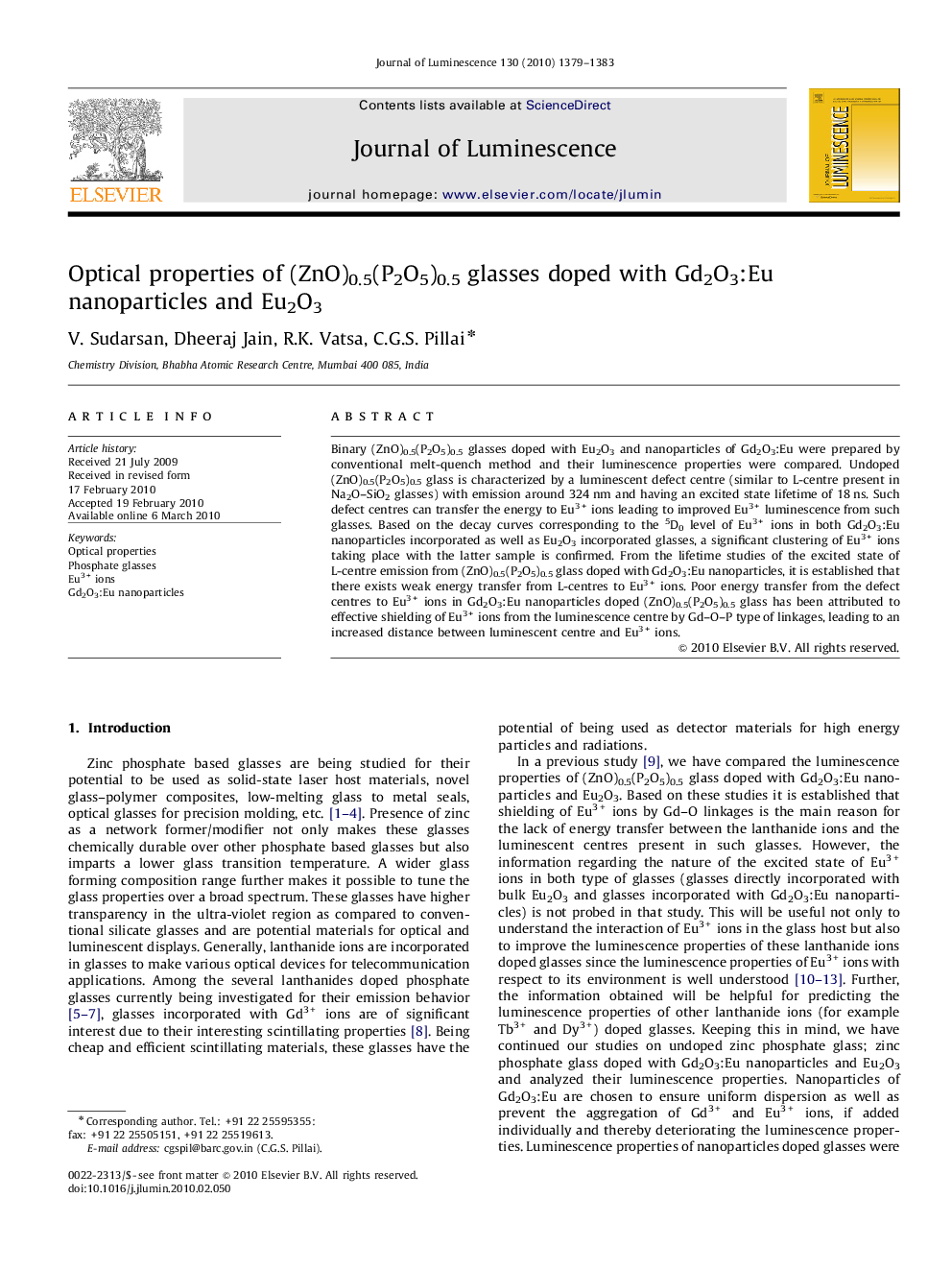| Article ID | Journal | Published Year | Pages | File Type |
|---|---|---|---|---|
| 5402442 | Journal of Luminescence | 2010 | 5 Pages |
Abstract
Binary (ZnO)0.5(P2O5)0.5 glasses doped with Eu2O3 and nanoparticles of Gd2O3:Eu were prepared by conventional melt-quench method and their luminescence properties were compared. Undoped (ZnO)0.5(P2O5)0.5 glass is characterized by a luminescent defect centre (similar to L-centre present in Na2O-SiO2 glasses) with emission around 324Â nm and having an excited state lifetime of 18Â ns. Such defect centres can transfer the energy to Eu3+ ions leading to improved Eu3+ luminescence from such glasses. Based on the decay curves corresponding to the 5D0 level of Eu3+ ions in both Gd2O3:Eu nanoparticles incorporated as well as Eu2O3 incorporated glasses, a significant clustering of Eu3+ ions taking place with the latter sample is confirmed. From the lifetime studies of the excited state of L-centre emission from (ZnO)0.5(P2O5)0.5 glass doped with Gd2O3:Eu nanoparticles, it is established that there exists weak energy transfer from L-centres to Eu3+ ions. Poor energy transfer from the defect centres to Eu3+ ions in Gd2O3:Eu nanoparticles doped (ZnO)0.5(P2O5)0.5 glass has been attributed to effective shielding of Eu3+ ions from the luminescence centre by Gd-O-P type of linkages, leading to an increased distance between luminescent centre and Eu3+ ions.
Related Topics
Physical Sciences and Engineering
Chemistry
Physical and Theoretical Chemistry
Authors
V. Sudarsan, Dheeraj Jain, R.K. Vatsa, C.G.S. Pillai,
